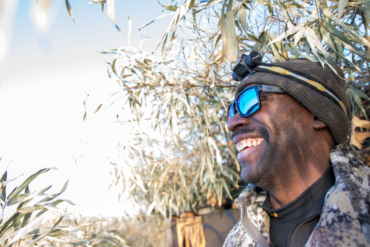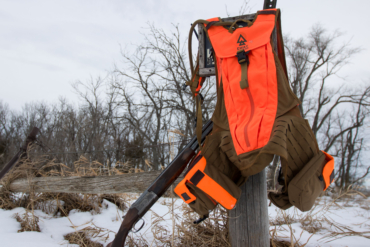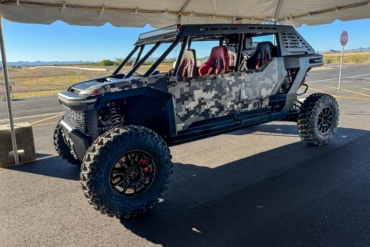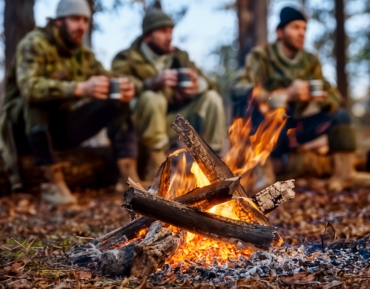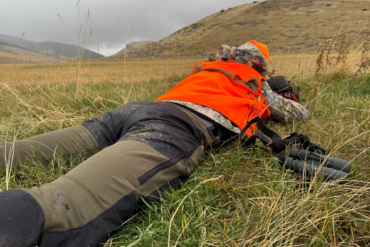Big-game tag draw results have now been released in many states across the West, and hunters’ planning stages are in full swing.
Many hunters have tried and true methods for putting meat on their family’s tables. But if you’re entering a new area or looking to switch things up a bit, here’s a look at options available for successfully getting your harvest out of the woods and into your freezer.
How to Pack Out Meat When Hunting
1. Horses and Mules
Synonymous with the words “pack out” is the image of mountain men and women carrying large loads on a string of pack animals. For most modern-day hunters, utilizing a horse requires hiring an outfitter. This can add significant cost to the hunt. While pack animals are efficient and able to carry approximately 20 percent of their body weight, the consistent draw for users of this method is the sense of friendship formed between man and beast.
Uninitiated hunters may fear or distrust horses, and rightfully so. They are big, strong, and require skill to manage. Anyone using horses or mules in the backcountry needs to ensure proper training and safety precautions are taken — not only for the hunter but for the animals as well.
2. Alternative Pack Animals: Llamas, Goats, and Dogs
On the rise in recent years is the use of llamas, goats, and even large dogs as pack animals. In general, these methods of moving meat require a year-round commitment of keeping, training, and using your pack animals on a regular basis to ensure they’re in tip-top shape for your backcountry adventure.
Hunters can often rent llamas from local ranches. And, due to their temperament, llamas require very little user training or equipment. Dogs and goats, on the other hand, can be great year-round family friends. And, with some training, they can carry anywhere between 15 and 25 percent of their body weight, according to packing experts.
3. Planes
Some very remote hunting locations in places such as Alaska and Canada will give you the option of flying out your meat. Although planes seem like an efficient method of transportation, they require a certain amount of patience to use safely and effectively. And this is certainly best left to the experts.
According to Cameron Murphy, former Alaskan bush pilot, the plane of choice is often a Piper Supercub. This plane has the ability to carry roughly 1,000 pounds, including the pilot, passengers, and fuel. Unless you’re a solo lightweight hunter, this means that you will be shuttled in and out of your hunting spot. Sudden changes in weather can cause delays, which could push a shuttle to take many hours or even days. But Murphy encourages hunters to trust their pilot.
“There are old pilots and bold pilots, but no old bold pilots,” said Murphy. “So choosing a service which gives priority to safety is essential, as well as respecting the pilot’s decision if they say no to your requests.”
4. Boots, Packs, Sweaty Backs
Perhaps the most common way to get your meat out of the woods is with good old-fashioned boot leather. This method requires the most physical labor by far. And, depending on the distance you allow yourself to hunt away from a road, it may require year-round physical fitness training. Fortunately, many backpacks provide load options specifically designed for meat, like Mystery Ranch’s Metcalf or Stone Glacier’s Xcurve Minimalist.
Many hunters prefer this method not only because of the low cost but also because of the sense of accomplishment it provides.
“Boots allow you to get help when needed,” says Lee Pierce of Fish Creek Outfitters in southern Colorado. “Boots build camaraderie amongst friends. And they also become essential when you fill your tag in a spot that you can’t get your pack animals to.” Don’t forget to fork over the extra cash for a great pair of boots, though; you won’t regret it.
5. Off-Road Vehicles
Off-road vehicles, or off-highway vehicles (OHVs), are a popular way to get in and out of the backcountry. But they do have their downsides, not the least of which is the noise these vehicles produce that all but ruins any chance of sneaking up on your quarry. When piloting an OHV, it’s vital to understand the legal ins and outs (on a state-by-state basis) of using these vehicles.
OHVs are unsurpassed, however, in their ability to carry large amounts of awkwardly shaped loads. Vehicles such as side-by-sides also allow for two or more hunters to access hunting grounds in one vehicle. When looking into the financial aspect of investing in OHVs, don’t forget the extra costs of a trailer, fuel, maintenance, and use permits.
6. Boats
Ever wish you knew what was on the other side of that river? Ever wonder what the headwaters of your favorite watershed looked like? Maybe a float trip should be your course of action this hunting season.
A simple canoe or inflatable ducky could help you access that potential honey hole with ease. Boats offer a relatively low financial investment and a nominal amount of time spent learning water safety. And this means getting to your new hunting spot and floating your meat out is well within your reach.
Final Thoughts
With any of these methods, training in safely moving heavy loads in the backcountry is highly recommended long before hunting season comes around. The game you’re pursuing and the country you’re accessing have a huge impact on the method you choose. In the end, remember that what matters is safely and effectively providing meat for you and your loved ones. And don’t forget to have some fun along the way.






